

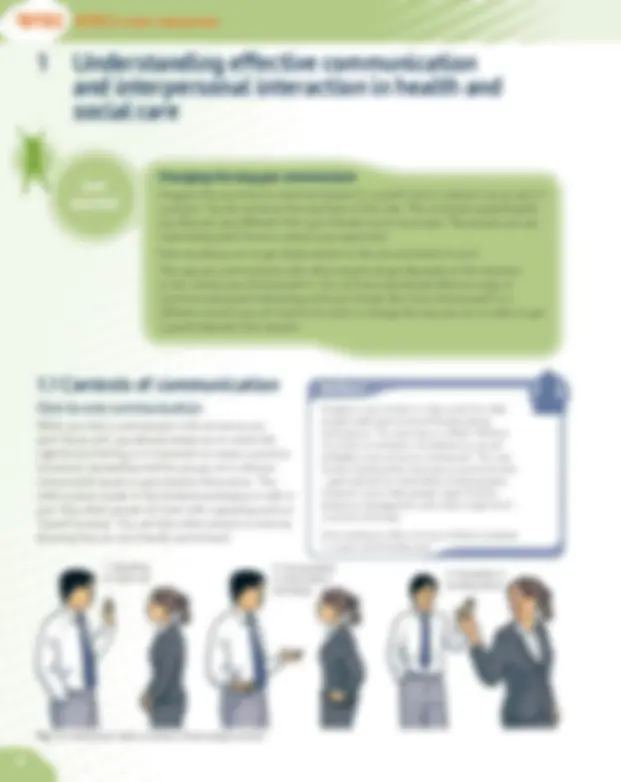
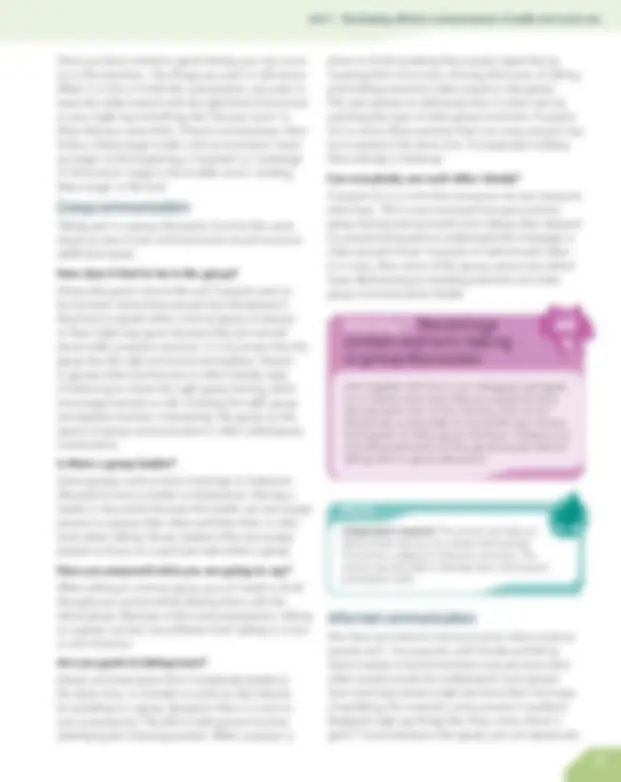
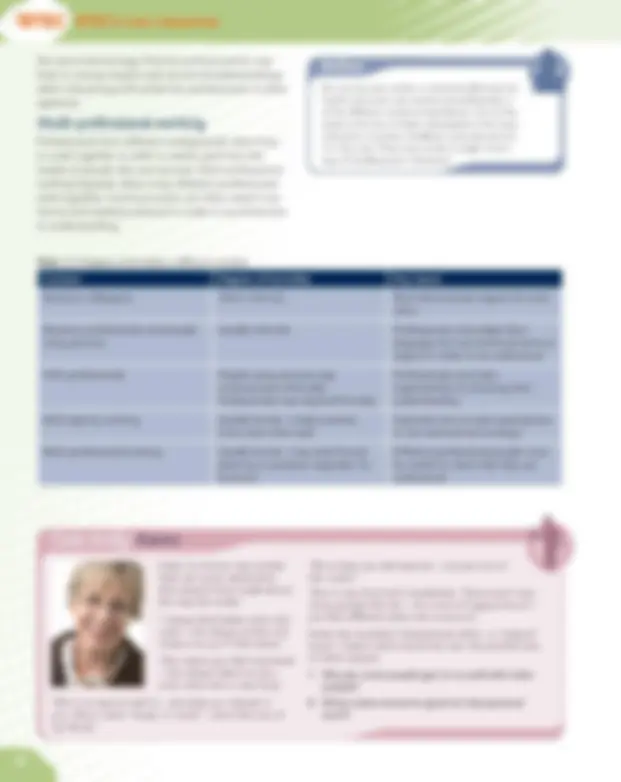
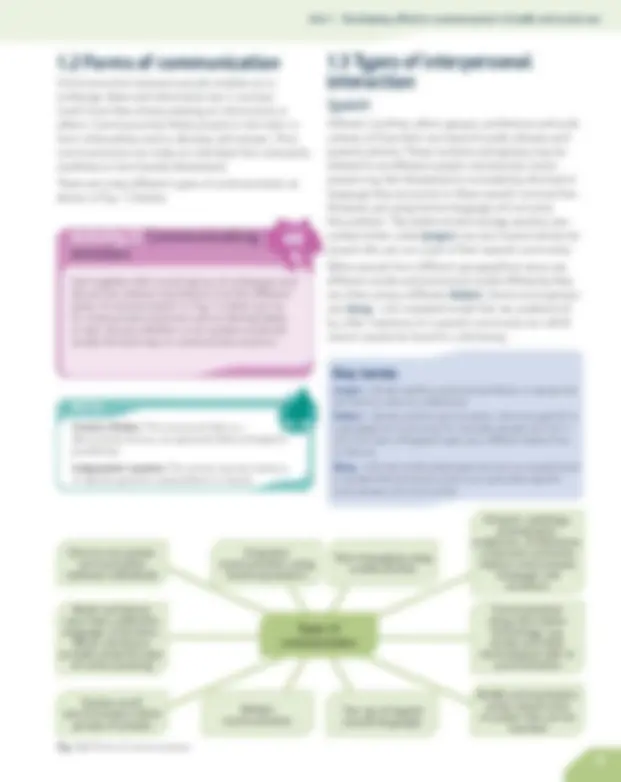
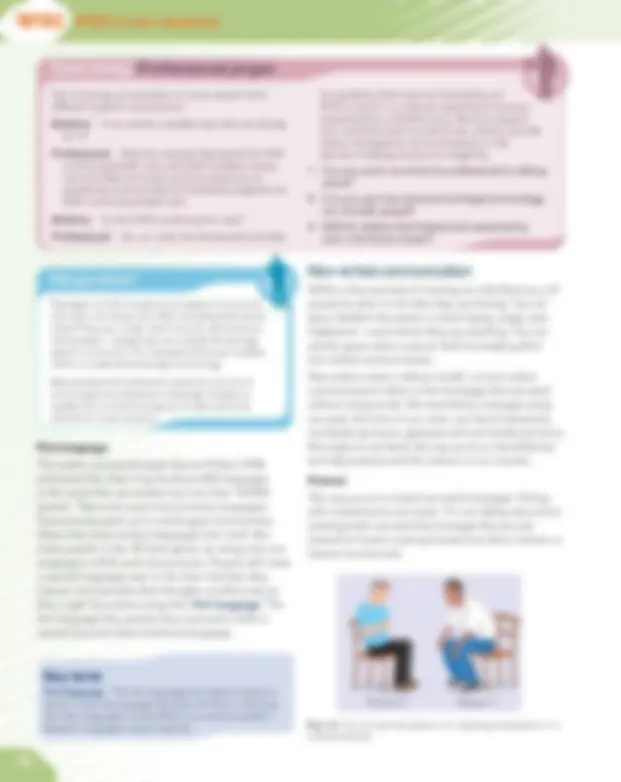
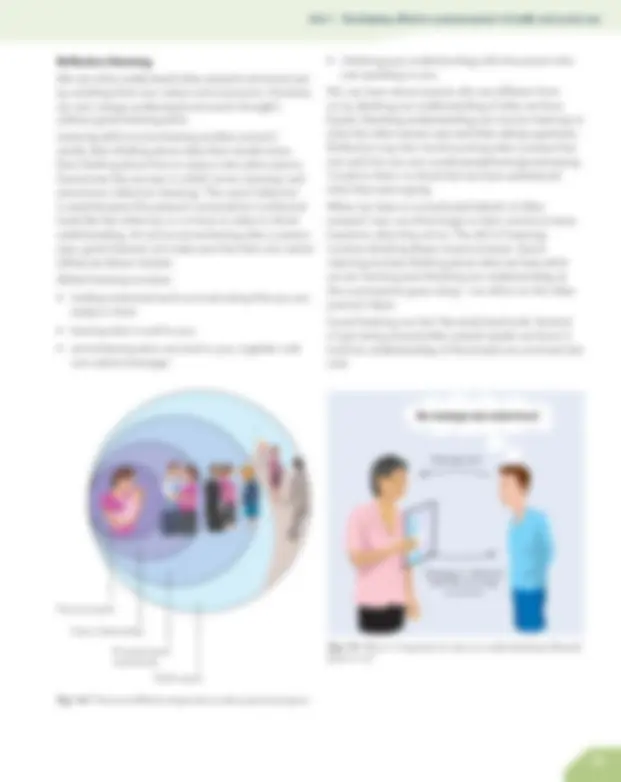
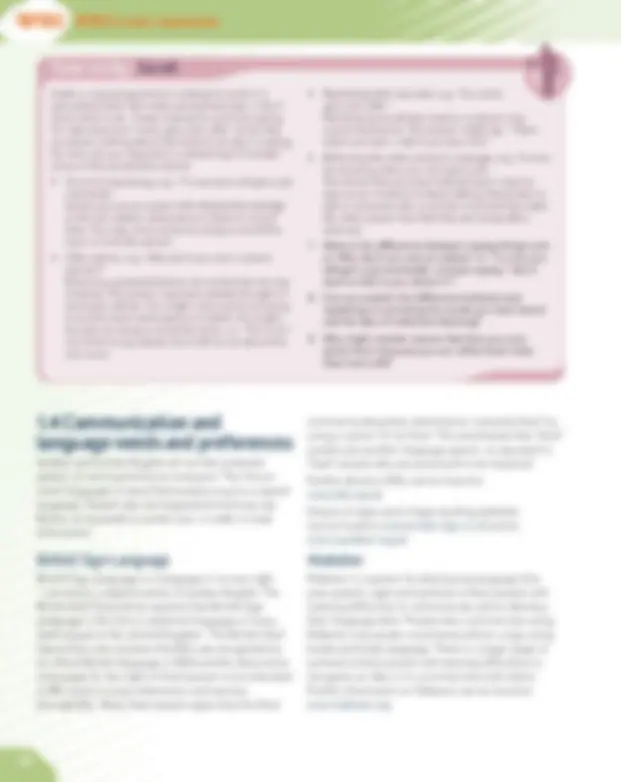
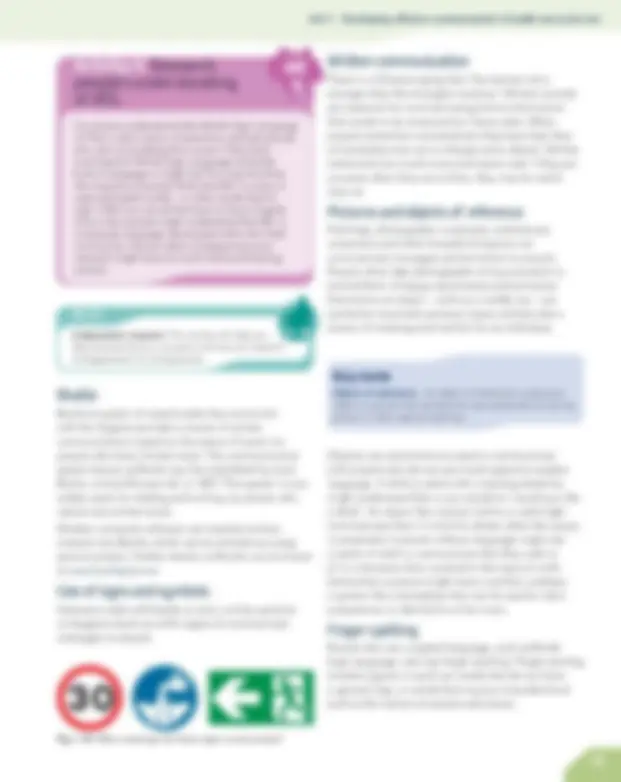
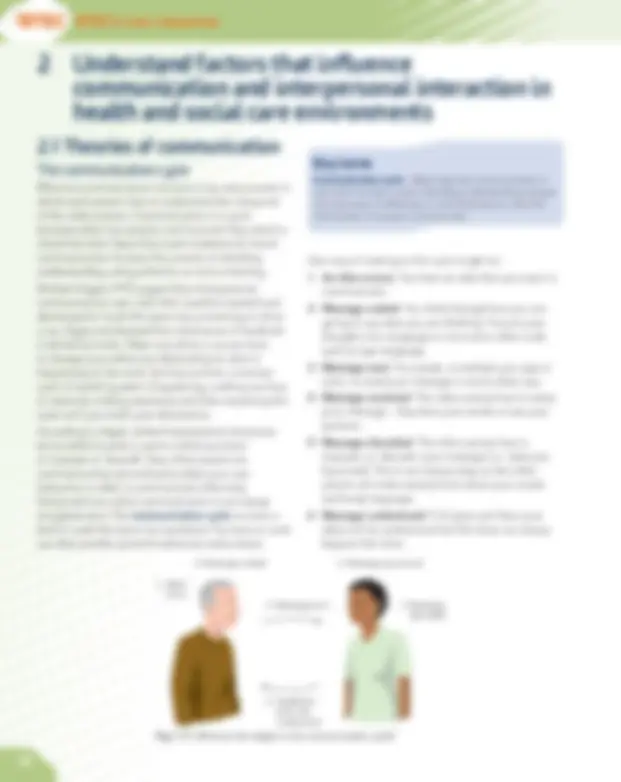
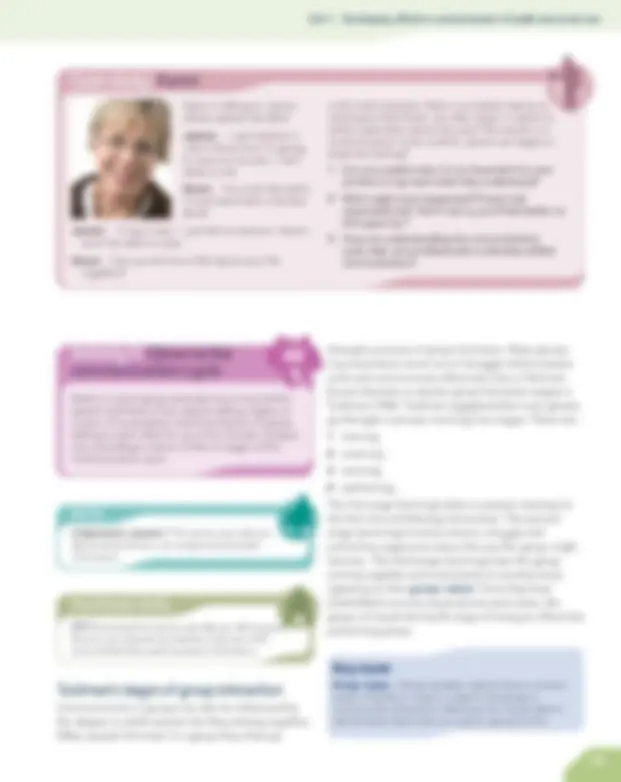
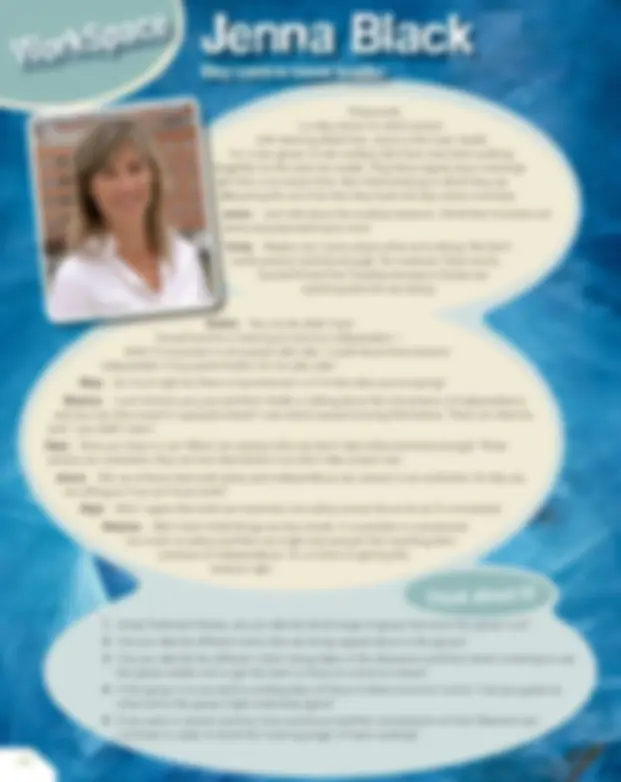
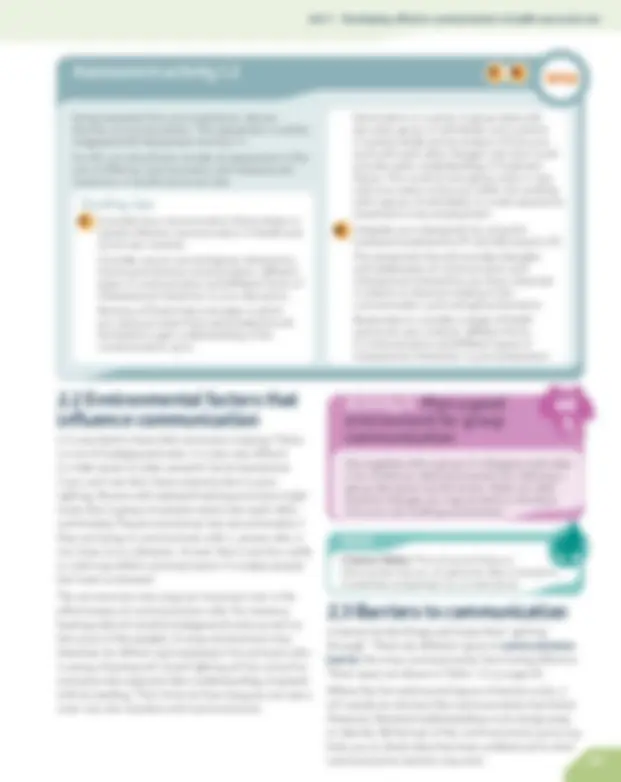
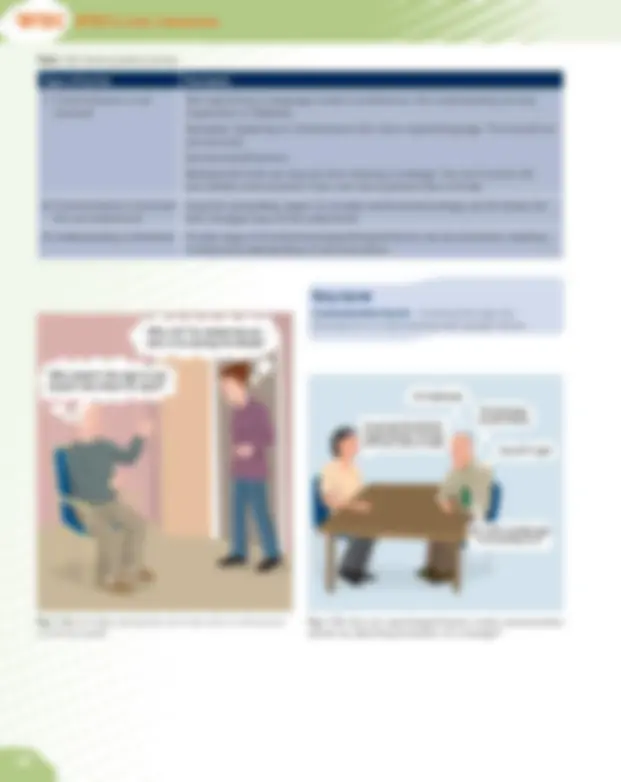
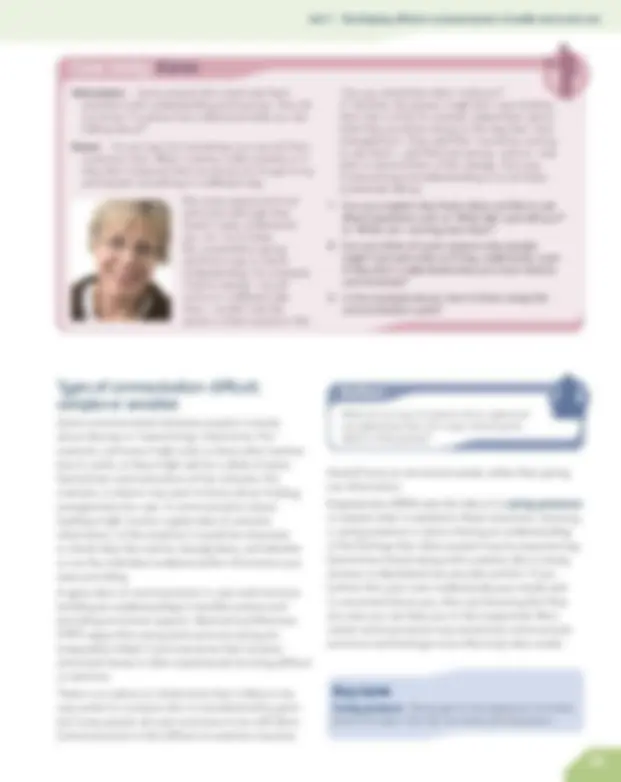
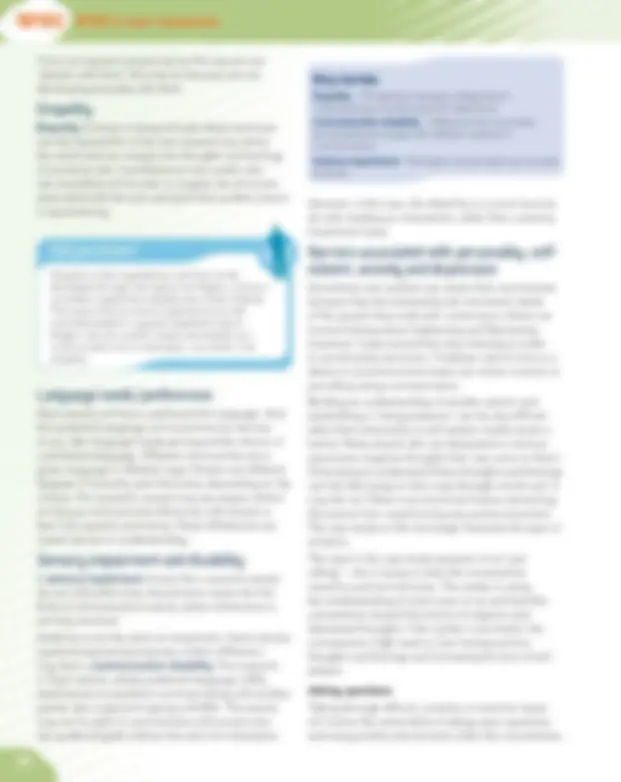
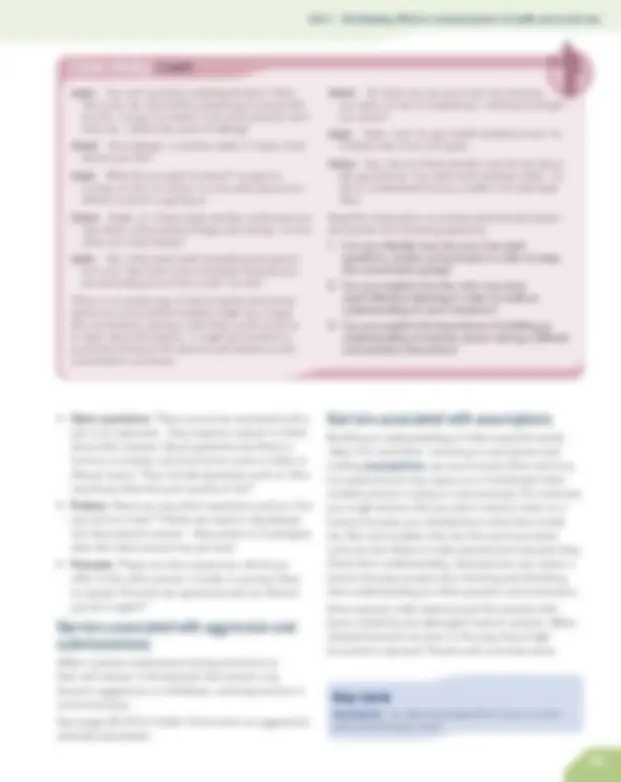
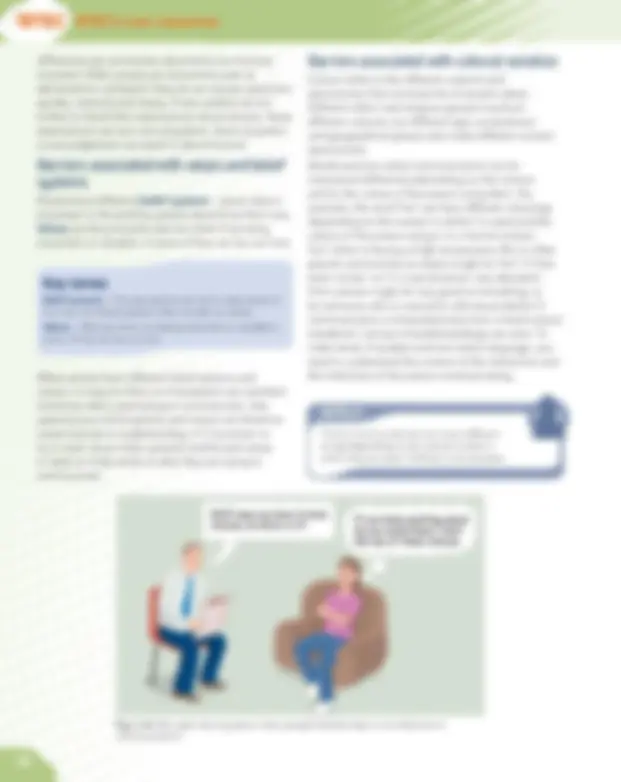
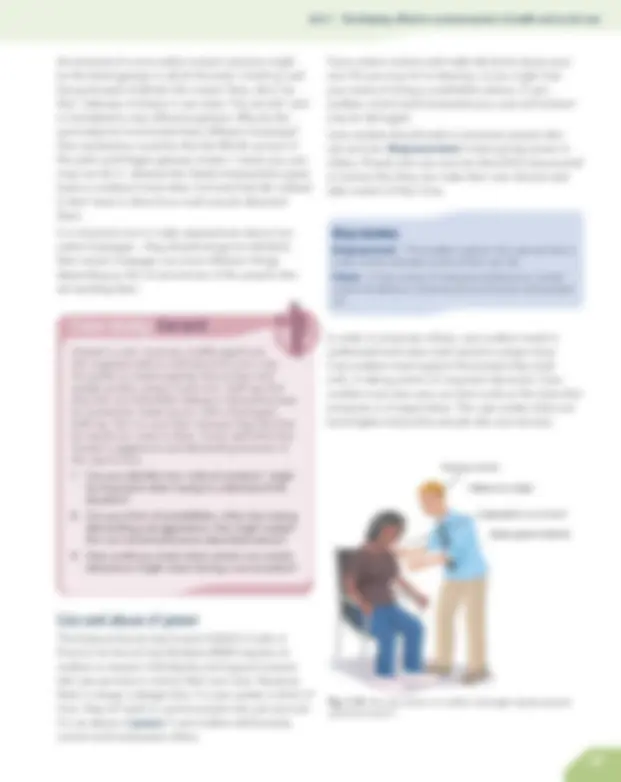
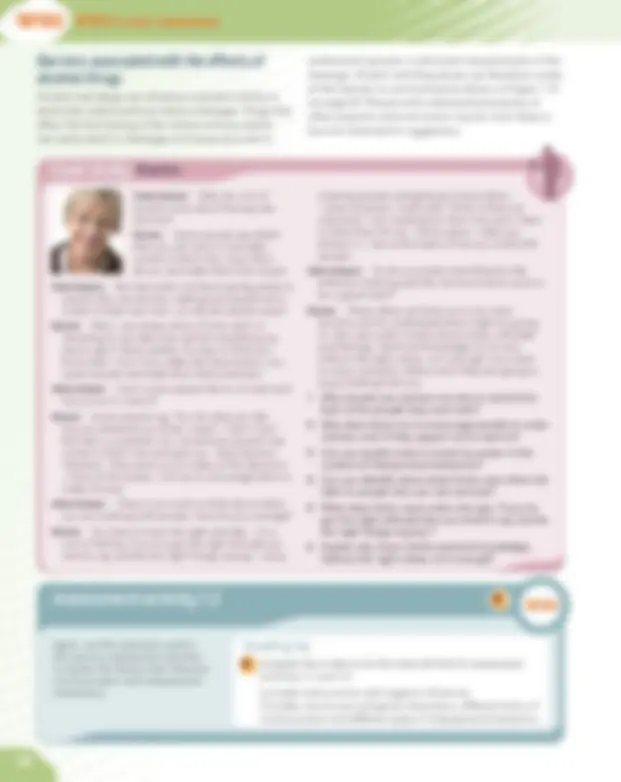
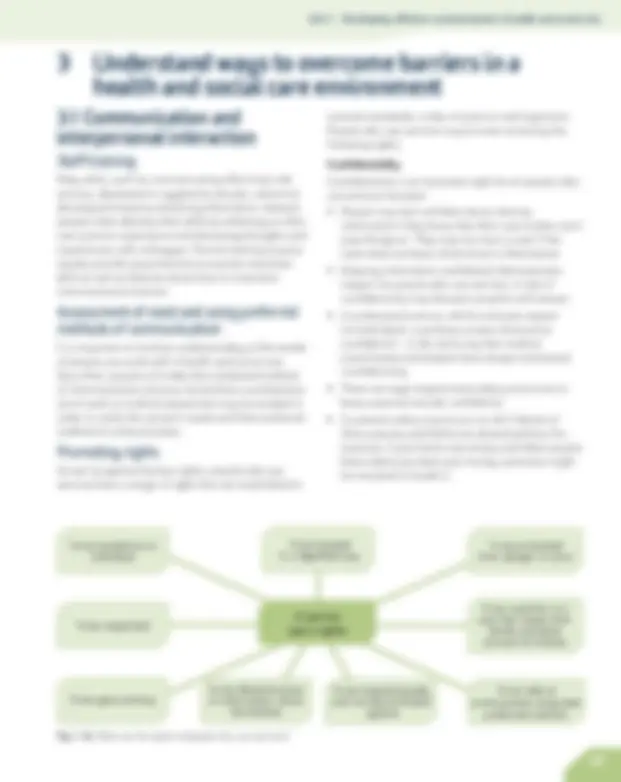
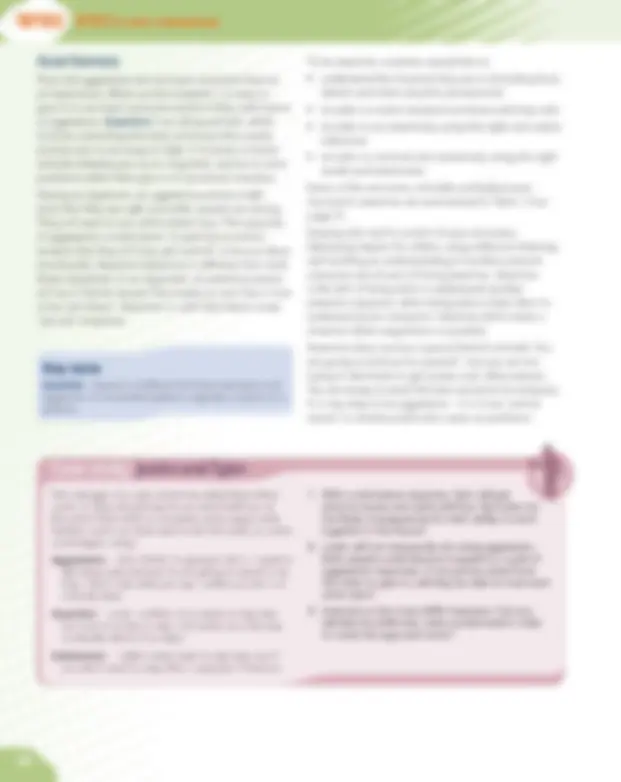
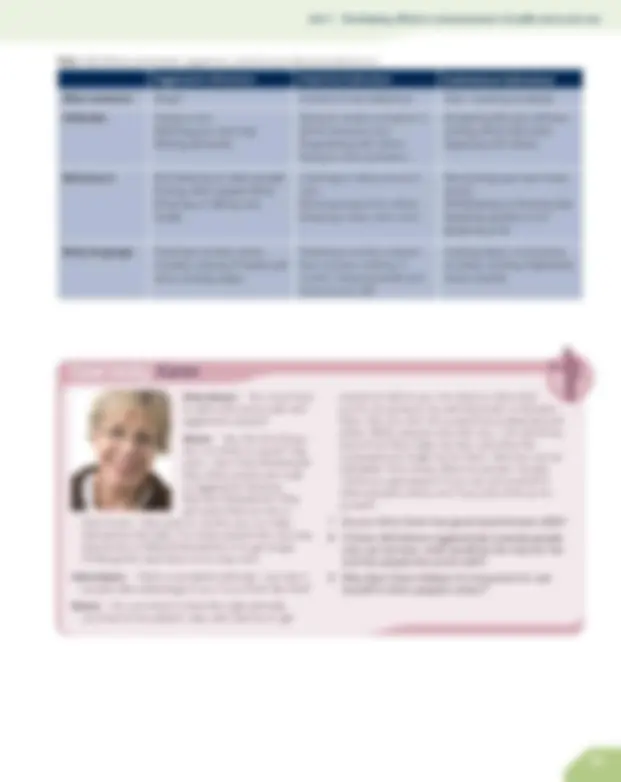
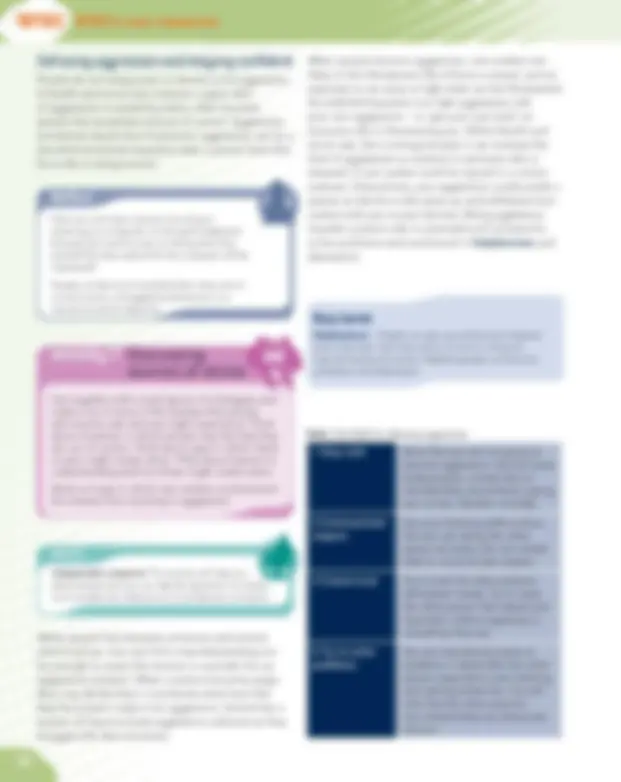
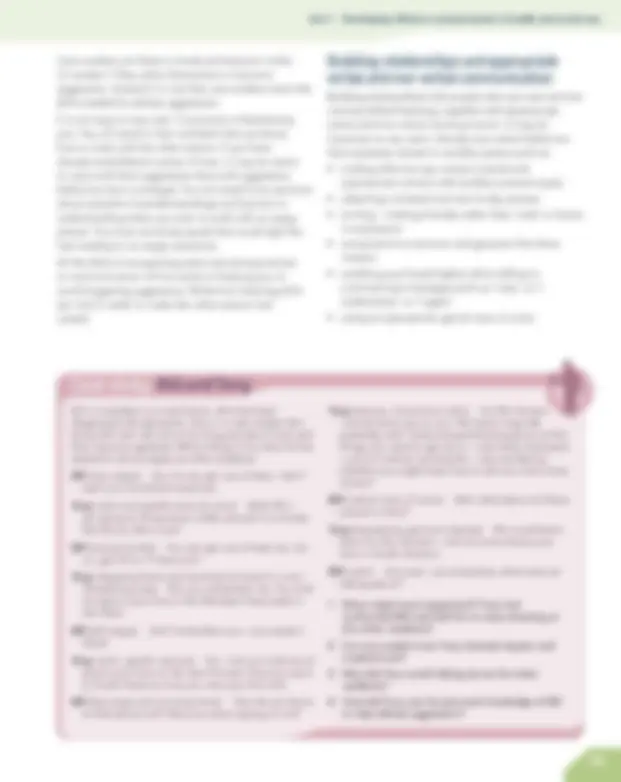
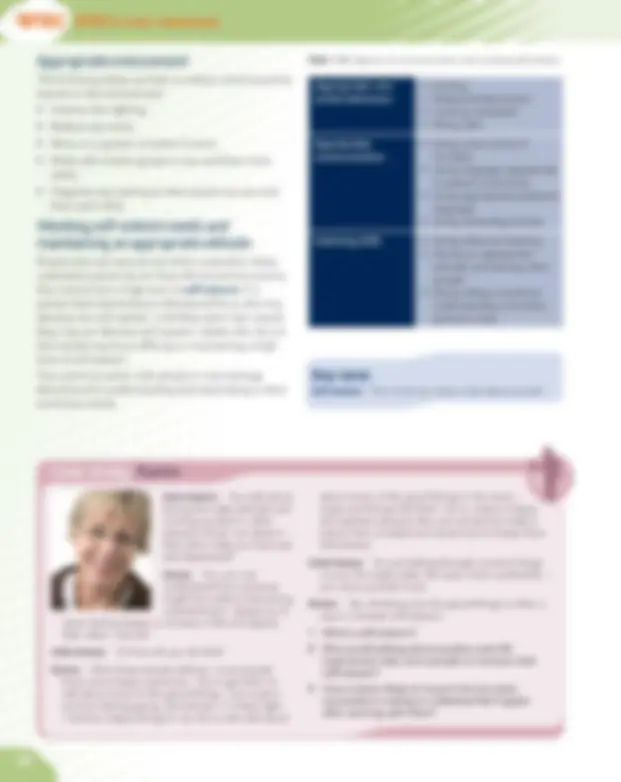
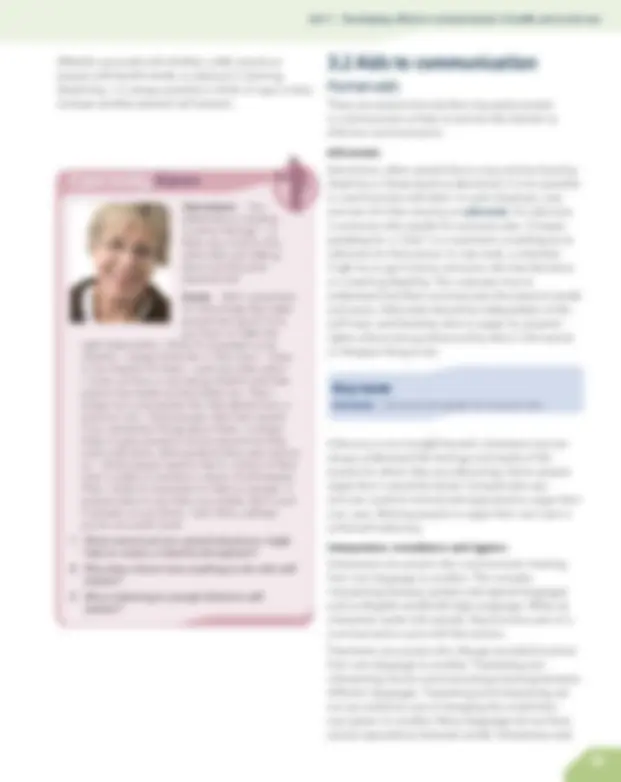
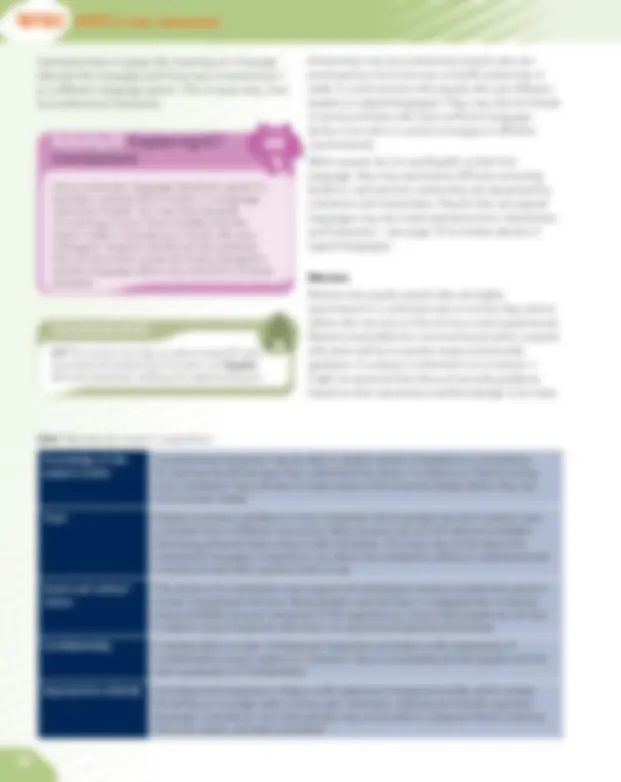
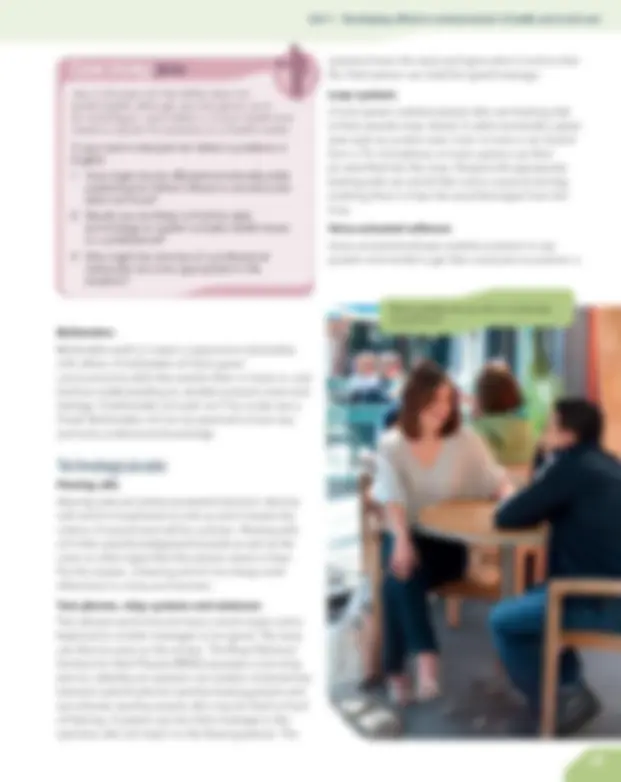
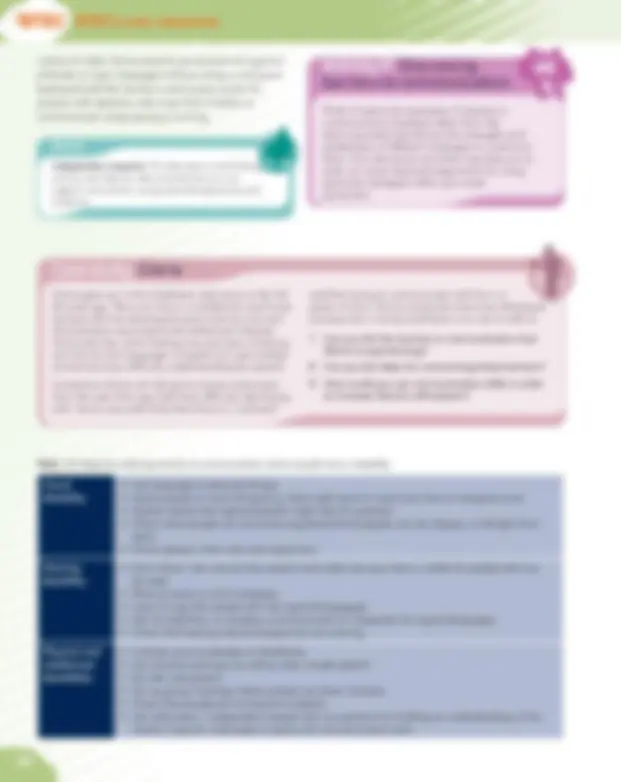

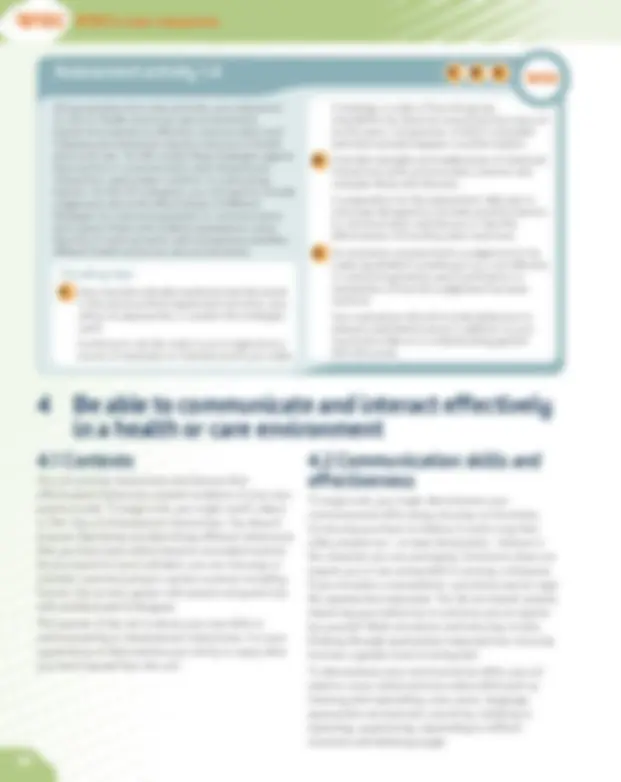
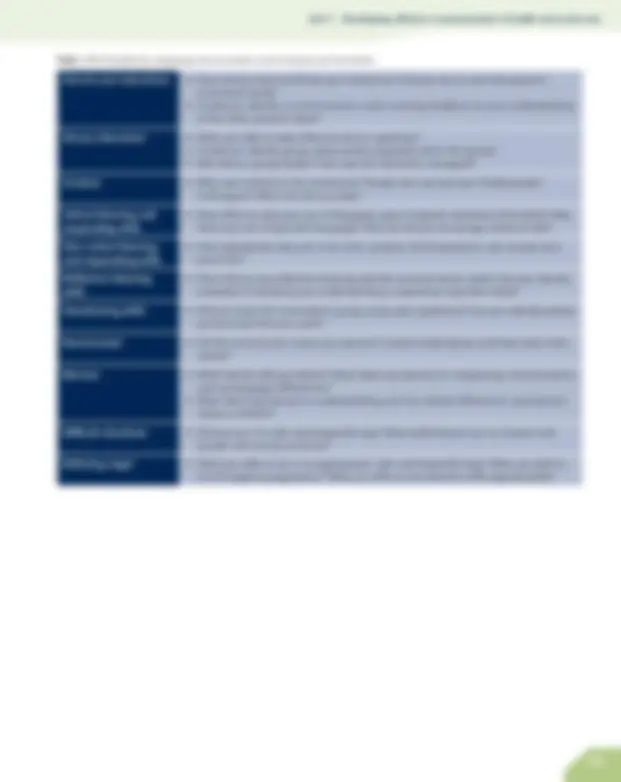
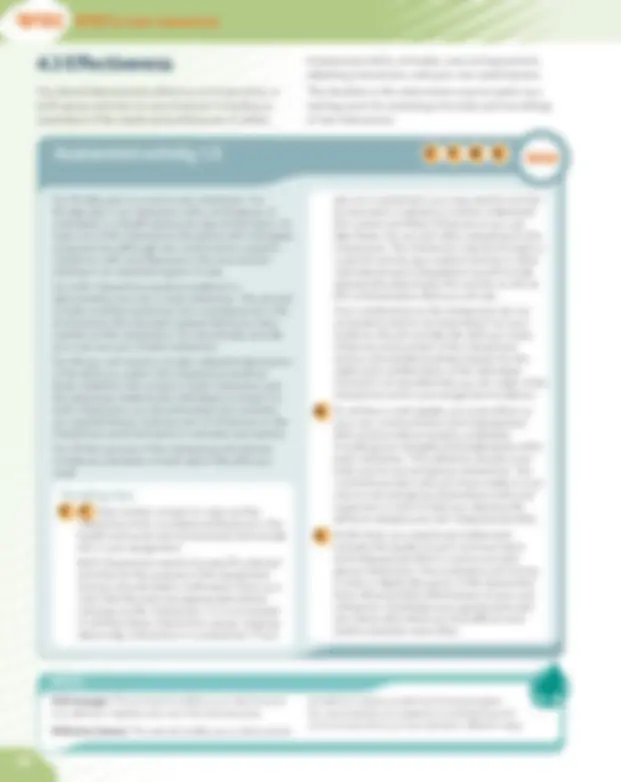

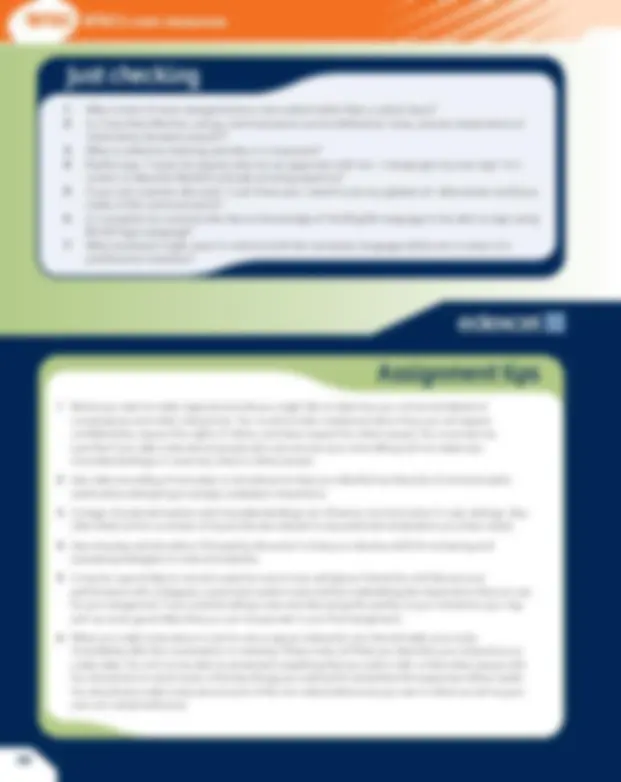


Study with the several resources on Docsity

Earn points by helping other students or get them with a premium plan


Prepare for your exams
Study with the several resources on Docsity

Earn points to download
Earn points by helping other students or get them with a premium plan
Community
Ask the community for help and clear up your study doubts
Discover the best universities in your country according to Docsity users
Free resources
Download our free guides on studying techniques, anxiety management strategies, and thesis advice from Docsity tutors
The importance of effective communication and interpersonal interaction in health and social care environments. Students will learn about factors that influence communication, ways to overcome barriers, and the role of skilled communication in building respect and trust. Topics include one-to-one and group communication, nonverbal communication, and the use of communication passports.
Typology: Schemes and Mind Maps
1 / 44

This page cannot be seen from the preview
Don't miss anything!





































Learning outcomes After completing this unit you should: 1 understand effective communication and interpersonal interaction in health and social care 2 understand factors that influence communication and interpersonal interaction in health and social care environments 3 understand ways to overcome barriers in a health and social care environment 4 be able to communicate and interact effectively in a health or care environment.
In order to work with people you must be good at communicating with them. Effective communication requires advanced practical skills in much the same way as driving a car does. Driving a car involves responding to changes in the road ahead, as well as responding to other road users. Effective communication in care involves being sensitive to feedback from others. Sometimes the people you meet may be happy but often they may feel sad, afraid, upset or anxious. You need to be able to recognise and respond appropriately to many different emotional situations. Different contexts will require you to communicate in different ways. Skilled communication requires you to make decisions as to what response would be most effective in the situation you find yourself in. Effective communication involves much more than just giving or receiving information.
BTEC’s own resources
Assessment and grading criteria
To achieve a pass grade, the evidence must show that you are able to:
To achieve a merit grade, the evidence must show that, in addition to the pass criteria, you are able to:
To achieve a distinction grade, the evidence must show that, in addition to the pass and merit criteria, you are able to:
communication and interpersonal interaction in a health and social care context. See Assessment activity 1.1, page 17
communication and interpersonal interaction in health and social care with a reference to theories of communication. See Assessment activity 1.2, page 21
See Assessment activity 1.2, page 21
and social care environments to overcome barriers to effective communication and interpersonal interactions. See Assessment activity 1.4, page 40
communication and interpersonal interactions in health and social care environments. See Assessment activity 1.3, page 28
and social care environments to overcome barriers to effective communication and interpersonal interactions. See Assessment activity 1.4, page 40
and social care environments to overcome barriers to effective communication and interpersonal interactions. See Assessment activity 1.4, page 40
interaction in a health and social care context. See Assessment activity 1.5, page 42
interpersonal skills in relation to each interaction. See Assessment activity 1.5, page 42
effectiveness of each interaction. See Assessment activity 1.5, page 42
a health and social care context. See Assessment activity 1.5, page 42
BTEC’s own resources
1 Understanding effective communication
and interpersonal interaction in health and
social care
Imagine that you have to interview people in a youth club in a distant city as part of a project. You do not know the members of this club. The members speak English but they are very different from your friends in your local area. The people you are interviewing don’t have to answer your questions. How would you act to get these people to like you and listen to you? The way you communicate with other people always depends on the situation or the context you find yourself in. You will have developed effective ways of communicating and interacting with your friends. But if you find yourself in a different context you will need to be able to change the way you act in order to get a good response from people.
1.1 Contexts of communication
When you start a conversation with someone you don’t know well, you should always try to create the right kind of feeling. It is important to create a positive emotional atmosphere before you go on to discuss complicated issues or give people information. The other person needs to feel relaxed and happy to talk to you. Very often people will start with a greeting such as ‘Good morning’. You can help other people to relax by showing that you are friendly and relaxed.
Reflect Imagine a care worker in a day centre for older people walking around and sharply asking each person: ‘You want tea or coffee?’ Without any other conversation, this behaviour would probably come across as ‘mechanical’. The care worker would just be carrying out a practical task
Fig 1.1: Interaction often involves a three-stage process
Unit 1 Developing effective communication in health and social care
Once you have created a good feeling, you can move on to the business – the things you want to talk about. When it is time to finish the conversation, you want to leave the other person with the right kind of emotions so you might say something like ‘See you soon’ to show that you value them. Formal conversations often follow a three-stage model, with an emotional ‘warm- up stage’ at the beginning, a ‘business’ or ‘exchange of information’ stage in the middle, and a ‘winding down stage’ at the end.
Taking part in a group discussion involves the same issues as one-to-one communication as well as some additional issues.
How does it feel to be in the group?
Group discussion only works well if people want to be involved. Sometimes people feel threatened if they have to speak within a formal group of people, or they might stay quiet because they are worried about other people’s reactions. It is important that the group has the right emotional atmosphere. People in groups often use humour or other friendly ways of behaving to create the right group feeling, which encourages people to talk. Creating the right group atmosphere involves ‘maintaining’ the group so this aspect of group communication is often called group maintenance.
Is there a group leader?
Some groups, such as team meetings or classroom discussions, have a leader or chairperson. Having a leader is very useful because the leader can encourage people to express their ideas and help them to take turns when talking. Group leaders often encourage people to focus on a particular task within a group.
Have you prepared what you are going to say?
When talking in a formal group you will need to think through your points before sharing them with the whole group. Because of this extra preparation, talking to a group can feel very different from talking in a one- to-one situation.
Are you good at taking turns?
Group communication fails if everybody speaks at the same time. It is harder to work out who should be speaking in a group discussion than in a one-to- one conversation. The skill of taking turns involves identifying the following pattern. When a person is
about to finish speaking they usually signal this by lowering their voice tone, slowing their pace of talking and looking around at other people in the group. The next person to talk knows that it is their turn by watching the eyes of other group members. If people fail to notice these patterns then too many people may try to speak at the same time. If everybody is talking then nobody is listening! Can everybody see each other clearly? If people sit in a circle then everyone can see everyone else’s face. This is very important because positive group feeling and successful turn-taking often depend on people being able to understand the messages in other people’s faces. If people sit behind each other or in rows, then some of the group cannot see others’ faces. Bad seating or standing positions can make group communication harder.
Activity 1: Record eye contact and turn-taking in group discussion
Get together with five or six colleagues and agree on a current news topic that you would all enjoy discussing for four or five minutes. One of you should use a camcorder to record the eye contact and speech of other group members. Analyse your recording and work out how good people were at taking turns in group discussion.
PLTS Independent enquirer: This activity will help you demonstrate that you can analyse and evaluate information, judging its relevance and value. The activity may also help to develop team working and participation skills.
We often use informal communication when we know people well – for example, with friends and family. Some friends or family members may use terms that other people would not understand. Local groups from particular places might also have their own ways of speaking. For example, some people in southern England might say things like ‘Hiya, mate. How’s it goin’?’ If you belong to this group, you will appreciate
Unit 1 Developing effective communication in health and social care
Activity 2: Formal and informal communication
Get together with a small group of colleagues and imagine an introductory meeting between a student and a care manager as part of a work practice placement. One person should act as the manager and another as the student. Work out how the manager would welcome the student and explain the work of the care centre. Then work out what questions the student should ask. After you have performed this simulation or role-play, two other students should undertake exactly the same task, but this time they should pretend that they are close friends chatting about the situation. The whole group should then discuss the differences between these two simulations.
Professional people, such as doctors and nurses, often work within their own specialised language community. A language community is a community of people that has developed its own special words, phrases, social expectations and ways of interacting that set it apart from other groups of people. Professionals are usually
Functional skills
English: Your discussion activity may also contribute towards English speaking and listening skills.
well aware of the need to translate technical language into everyday language when they work with people from other professions or people who use services. It is important that professionals check that they are not being misunderstood (see section 2 on the role of feedback).
When people who use services communicate with professionals there is always a risk of misunderstanding between people from different language communities. It is important that people check that they are being understood correctly. Professional health and social care staff need to check their understanding of issues with people who are communicating with them.
Health and social care professionals often have to communicate with colleagues who work for different organisations. For example, a home care organiser might have to communicate not only with people who use services and care workers but also with community nurses, GPs’ surgeries, hospital services, occupational therapists, voluntary groups, day care groups and many other organisations. It is important not to assume that people from different agencies will understand
Language community – A social community of people that has its own special ways of using language in order to communicate between group members.
Case study: Amber
The following conversation took place between members of the same family: Mother: How was your day at work? Amber: OK, didn’t do much, walked about a bit. Have to learn where everything is – like. Mother: Did you enjoy it there? Amber: Suppose it was all right. I had to listen to a guy going on about stuff but it was boring. Might be better tomorrow. I am going to ‘do’ the residents tomorrow – they should be more fun!
1 If Amber had spoken to her colleagues like this, would they have assumed that Amber respected and valued them? 2 Can you explain why a conversation like this might be acceptable within a family context but not within a work context? 3 Can you explain how Amber should change her comments if she was describing her first day at work to a professional colleague?
BTEC’s own resources
the same terminology. Formal communication may help to convey respect and avoid misunderstandings when interacting with unfamiliar professionals in other agencies.
Professionals from different backgrounds often have to work together in order to assess and meet the needs of people who use services. Multi-professional working happens when many different professionals work together. Communication will often need to be formal and carefully planned in order to avoid barriers to understanding.
Reflect No one has ever written a rule book defining how health and social care workers should behave in all the different contexts listed above. One of the reasons this has not been attempted is that every interaction involves a feedback cycle (see section 2 in this unit). There may not be a single correct way of handling each interaction.
Table 1.1: Degrees of formality in different contexts
Context Degree of formality Key issues Between colleagues Often informal. Must demonstrate respect for each other. Between professionals and people using services
Usually informal. Professionals must adapt their language (not use technical terms or jargon) in order to be understood. With professionals People using services may communicate informally. Professionals may respond formally.
Professionals must take responsibility for checking their understanding. Multi-agency working Usually formal – unless workers know each other well.
Important not to make assumptions or use technical terminology. Multi-professional working Usually formal – may need formal planning to produce ‘agendas’ for business.
Different professional people must be careful to check that they are understood.
Case study: Karen
Karen is a home care worker. Here are some statements that people have made about the way she works: ‘I always feel better when she visits – she always smiles and cheers me up if I feel down.’ ‘She makes you feel important
- she always listens to you, even when she is very busy.’ ‘She is so easy to talk to – she takes an interest in you. She is never ‘bossy’ or ‘posh’ – she’s like one of my family’.
‘She makes you feel special – not just one of the crowd.’ ‘She is very kind and considerate. There aren’t very many people like her – it’s a sort of magical touch – you feel different when she is around.’ Karen has excellent interpersonal skills – a ‘ magical touch’. Karen’s skills enrich her own life and the lives of other people. 1 Why do some people get on so well with other people? 2 What makes someone good at interpersonal work?
BTEC’s own resources
First language
The author and psychologist Steven Pinker (1994) estimated that there may be about 600 languages in the world that are spoken by more than 100, people. There are many more minority languages. Some people grow up in multilingual communities, where they learn several languages from birth. But many people in the UK have grown up using only one language to think and communicate. People who learn a second language later in life often find that they cannot communicate their thoughts as effectively as they might have done using their first language. The first language that people have learned to think in usually becomes their preferred language.
Case study: Professional jargon
The following conversation involves speech from different speech communities. Relative: If my mother needed care who would pay for it? Professional: Well the national framework for NHS continuing health care and NHS funded nursing care provides principles and processes for an assessment process that will establish eligibility for NHS continuing health care. Relative: So the NHS would pay for care? Professional: No, as I said, the framework provides
for guidance that must be followed by all PCTs to result in a national assessment process supported by a checklist tool, decision support tool, and fast track tool which are used to provide clarity, transparency and consistency in the decision-making process for eligibility. 1 Can you work out what the professional is talking about? 2 Can you see how technical and legal terminology can exclude people? 3 Will the relative feel helped and respected by such a technical answer?
Within a few seconds of meeting an individual you will usually be able to tell what they are feeling. You will know whether the person is tired, happy, angry, sad, frightened – even before they say anything. You can usually guess what a person feels by studying their non-verbal communication. Non-verbal means ‘without words’, so non-verbal communication refers to the messages that we send without using words. We send these messages using our eyes, the tone of our voice, our facial expression, our hands and arms, gestures with our hands and arms, the angle of our head, the way we sit or stand (known as body posture) and the tension in our muscles. Posture The way you sit or stand can send messages. Sitting with crossed arms can mean ‘I’m not taking any notice’. Leaning back can send the message that you are relaxed or bored. Leaning forward can show interest or intense involvement.
Did you know?
Teenagers can be thought of as a speech community with their own slang. Lucy Tobin has published a book called Pimp your vocab, which acts as a dictionary for ‘teek people’ – people who are outside the teenage speech community. This ‘teenglish dictionary’ enables others to understand teenage terminology. Many people think the book is great fun, but some critics argue that adolescent language changes so rapidly that it is hard to keep up to date and to be sensitive to local variations.
Person 2 Person 1
Fig 1.4: You can see that person 2 is rejecting what person 1 is communicating
First language – The first language that a person learns to speak is often the language that they will think in. Working with later languages can be difficult, as mental translation between languages may be required.
Unit 1 Developing effective communication in health and social care
The way you move As well as posture, your body movements will communicate messages. For example, the way you walk, move your head, sit, cross your legs and so on will send messages about whether you are tired, happy, sad, or bored. Facing other people The way in which you face other people can also communicate emotional messages. Standing or sitting face-to-face may send a message that you are being formal or angry. A slight angle can create a more relaxed and friendly feeling.
Fig 1.5: Square-on orientation can communicate aggression
Gestures Gestures are hand and arm movements that can help us to understand what a person is saying. Some gestures carry a common meaning in most communities in the UK.
Fig 1.6: Common gestures for ‘good’ and ‘perfect’
Can you see how a person’s emotions can often be interpreted from their facial expression?
Facial expression Your face often indicates your emotional state. When a person is sad they may signal this emotion by looking down – there may be tension in their face and their mouth will be closed. The muscles in the person’s shoulders are likely to be relaxed but their face and neck may show tension. A happy person will have ‘wide eyes’ that make contact with you – and they will probably smile. When people are excited they move their arms and hands to signal this. We can guess another person’s feelings and thoughts by looking at their eyes, using eye-to-eye contact. Our eyes get wider when we are excited, attracted to, or interested in someone else. A fixed stare may send the message that someone is angry. In European culture, looking away is often interpreted as being bored or not interested.
Unit 1 Developing effective communication in health and social care
Reflective listening
We can often understand other people’s emotions just by watching their non-verbal communication. However, we can’t always understand someone’s thoughts without good listening skills.
Listening skills involve hearing another person’s words, then thinking about what their words mean, then thinking about how to reply to the other person. Sometimes this process is called ‘active listening’ and sometimes ‘reflective listening.’ The word ‘reflective’ is used because the person’s conversation is reflected back (like the reflection in a mirror) in order to check understanding. As well as remembering what a person says, good listeners will make sure that their non-verbal behaviour shows interest.
Skilled listening involves:
Personal space
Close relationships Personal space with friends Public space
Fig 1.8: There are different expectations about personal space
Message is ‘reflected’ back like an image in a mirror
Message sent
Fig 1.9: Why is it important to see our understanding reflected back to us?
BTEC’s own resources
1.4 Communication and
language needs and preferences
Spoken and written English are not the preferred system of communication for everyone. The first (or main) language of many Deaf people may be a signed language. People who are registered blind may use Braille, as opposed to written text, in order to read information.
British Sign Language is a language in its own right
Case study: Sarah
Sarah is unemployed and is looking for work in a specialised field. She looks worried and says ‘I don’t know what to do. I keep looking for work and going for interviews but I never get a job offer.’ Given that you know nothing about the kind of job she is looking for, how can you respond in a skilled way? Consider some of the possibilities below:
community should be identified as ‘culturally Deaf’ by using a capital ‘D’ for Deaf. This emphasises that ‘Deaf’ people use another language system, as opposed to ‘Deaf’ people who are perceived to be impaired. Further details of BSL can be found at www.bda.org.uk Details of signs and a finger spelling alphabet can be found at www.british-sign.co.uk and at www.royaldeaf.org.uk
Makaton is a system for developing language that uses speech, signs and symbols to help people with learning difficulties to communicate and to develop their language skills. People who communicate using Makaton may speak a word and perform a sign using hands and body language. There is a large range of symbols to help people with learning difficulties to recognise an idea or to communicate with others. Further information on Makaton can be found at www.makaton.org
BTEC’s own resources
Communication passports are usually small personalised books containing straightforward practical information about a person and their style of communication. The passport may help health and care workers to understand the needs of a person with communication difficulties. Communication passports often include photographs or drawings that may help care workers to gain a better understanding of the person who owns the passport. They are put together by working with the person with communication difficulties and his or her carers; the person tells their own story of their likes, dislikes and communication styles.
Information technology offers a wide range of facilities to help with communication. It is possible to provide enlarged visual displays or voice description for people with visual impairment. Electronic aids – such as the minicom for people with a hearing disability or voice typing for people with dyslexia – can turn
speech into writing. Some electronic communication systems can be activated by air pressure, so that a person can communicate via an oral tube connected to computerised equipment. At a simpler level, aids such as flash cards or picture books can also improve communication with people who do not use a spoken or signed language. Text messaging, using a mobile phone, provides an effective way of staying in touch for many people. For people with a hearing disability, text messaging may provide a major form of communication.
Think about the way children communicate through play using objects
Reflect Imagine that you had to spell every word in a phone conversation – it would take a long time and the conversation would not be very enjoyable. For this reason, people who use signed languages do not generally use finger spelling to communicate, other than for specific terms.
Did you know?
In August 2009 a Roman Catholic Archbishop, Vincent Nichols, was reported as saying that ‘too much exclusive use of electronic information dehumanises what is a very, very important part of community life and living together... We’re losing social skills, the human interaction skills, how to read a person’s mood, to read their body language.’ How far do you think email and text messages may spoil or improve relationships between people?
When you send text messages to friends, do you use symbols and shortened words that would not be acceptable in more formal academic work? If you send emails, do you use abbreviations, symbols and special terms or do you only use formal English? Do you think it should be acceptable to use ‘texting’ symbols and abbreviations for academic work? How formal should English be?
Many people have specific communication needs. It may be important to employ an interpreter if a person uses a different language such as BSL. Some carers learn to use communication systems, such as Makaton, in order to help them communicate with people. If you are communicating with a person with a hearing impairment you should make sure that the person can see your face clearly so that they can see your expressions and the way your lips move. Sometimes people use clues from facial expression and lip movement to interpret what you might be saying. It is also important to speak in a clear, normal voice. If you raise your voice, your face and lips will become distorted. A person with a hearing impairment may realise that you are shouting and may assume that you
Unit 1 Developing effective communication in health and social care
are angry! It is also important to try and speak in an environment with little background noise.
If people have limited vision, it may be important to use language to describe issues that a sighted person might take for granted, such as non-verbal communication or the context of certain comments. Touch may be an important aspect of communication. For instance, some registered blind people can work out what you look like if they can touch your face in order to build an understanding of your features.
It is always important to choose the right style of language in order to communicate with people from different language communities.
Skilled carers use a range of conversational techniques when working with others. These include being sensitive to variations in culture.
Culture means the history, customs and ways of behaving that people learn as they grow up. People from different regions of Britain use different expressions. Non-verbal signs vary from culture to culture. White middle-class people often expect people to ‘look them in the eye’ while talking. If a person looks down or away a lot, they think it is a sign that the person may be dishonest, or perhaps sad or depressed. In some other cultures – for example, among some black communities – looking down or away when talking is a sign of respect.
No one can learn every possible system of cultural variation in non-verbal behaviour but it is possible to learn about the ones that are used by the people you are with! You can do this by first noticing and remembering what others do – in other words, what non-verbal messages they are sending. The next step is to make a guess as to what messages the person is trying to give you. Finally, check your understanding (your guesses) with the person. This involves reflective listening and thinking carefully about the person’s responses.
Cultural variation – Communication is always influenced by cultural systems of meaning. Different cultures interpret verbal and non-verbal communication behaviours as having different meanings.
Care workers must be careful not to assume that statements and signs always have the same meaning. Cultural differences and different settings can alter what things mean. A vast range of meanings can be given to any type of eye contact, facial expression, posture or gesture. Every culture, and even small groups of people, can develop their own system of meanings. Care workers have to respect differences but it is impossible to learn all the possible meanings that phrases, words and signs may have.
Assessment activity 1.1^ P
Explain, using examples you have observed, the role of communication and interpersonal interactions in health and social care.
Grading tip
interactions you have observed in class role plays, informally with your peers, with others at work and in school/college or in public spaces and particularly in health and social care settings when visiting or in placements. Note behaviours, non-verbal communication skills and how the communication cycle is/is not demonstrated. Remember that your notes should maintain
the anonymity of individuals and any details that might enable individuals or settings to be identified. Consider what is meant by ‘effective’ when discussing communication and interpersonal interactions in health and social care. Consider formal and informal communication, differences between different language communities and cultures and the role of verbal and non-verbal communication in interpersonal interactions. Include examples of different language needs and preferences in your explanation.
Unit 1 Developing effective communication in health and social care
Communication in groups can also be influenced by the degree to which people feel they belong together. When people first meet in a group they often go
through a process of group formation. Many groups may experience some sort of struggle before people unite and communicate effectively. One of the best- known theorists to explain group formation stages is Tuckman (1965). Tuckman suggested that most groups go through a process involving four stages. These are: 1 forming 2 storming 3 norming 4 performing. The first stage (forming) refers to people meeting for the first time and sharing information. The second stage (storming) involves tension, struggle and sometimes arguments about the way the group might function. The third stage (norming) sees the group coming together and consciously or unconsciously agreeing on their group values. Once they have established common expectations and values, the group will reach the fourth stage of being an effectively performing group.
PLTS Independent enquirer: This activity may help you demonstrate that you can analyse and evaluate information.
Functional skills ICT: Discussing this activity may help you demonstrate that you can evaluate the selection and use of ICT tools and facilities used to present information.
Group values – Group members need to share a common system of beliefs or values in order for the group to communicate and perform effectively. You may be able to identify these values when you watch a group at work.
Case study: Karen
Karen is talking to Jasmin, whose partner has died. Jasmin: I can’t believe it. I don’t know how I’m going to cope on my own, I can’t sleep or eat. Karen: You must feel awful, it must have been a terrible shock. Jasmin: I’ll say it was – I just feel so anxious. I know I won’t be able to cope. Karen: Can you tell me a little about your life together?
In this brief example, there is no helpful advice or information that Karen can offer. Karen is careful to reflect back what Jasmin has said. This results in a communication cycle in which Jasmin can begin to share her feelings. 1 Can you explain why it is so important for care workers to say back what they understand? 2 What might have happened if Karen had responded with ‘Don’t worry, you’ll feel better as time goes by’? 3 How can understanding the communication cycle help care professionals to develop skilled communication?
Activity 5: Observe the communication cycle
Work in a small group and plan how to record the speech and faces of two people talking. Agree on a topic of conversation and record pairs of people talking to each other for up to five minutes. Analyse your recordings in terms of the six stages of the communication cycle.
WorkSpace
1 Using Tuckman’s theory, can you identify which stage of group formation this group is at? 2 Can you identify different norms that are being argued about in the group? 3 Can you identify the different ‘sides’ being taken in the discussion and how Jenna is starting to use her group leader role to get the team to focus on common values? 4 If this group is to succeed in working they will have to share common ‘norms’. Can you guess on what norms the group might eventually agree? 5 If you were in Jenna’s position, how would you lead the conversation on from Shanice’s last comment in order to reach the ‘norming stage’ of team working?
André: Yes, but he didn’t burn himself and he is learning to become independent. I think it’s important to let people take risks. I could never have become independent if my parents hadn’t let me take risks! Deja: So it’s all right for Drew to burn himself, is it? Is that what you’re saying? Shanice: I can’t believe you just said that! André is talking about the importance of independence and you turn that round to saying he doesn’t care about people burning themselves. That’s not what he said – you didn’t listen! Deja: Now you listen to me! What I am saying is that we don’t take safety seriously enough. These people are vulnerable, they can hurt themselves if we don’t take proper care. Jenna: OK, we all know that both safety and independence are central to our work here. So why are we talking as if we can’t have both? Deja: Well, I agree that both are important, but safety comes first as far as I’m concerned. Shanice: Well I don’t think things are that simple. It is possible to concentrate too much on safety and then we might stop people from reaching their potential of independence. It’s a matter of getting the balance right.
Think about it!
Pinewoods is a day centre for adult people with learning disabilities. Jenna is the team leader for a new group of care workers who have only been working together for the past two weeks. They have regular team meetings and this is an extract from their third meeting in which they are discussing the activities that they lead with day centre members. Jenna: Let’s talk about the cookery sessions. I think that members are really enjoying learning to cook. Carly: Maybe, but I worry about what we’re doing. We don’t watch people carefully enough. For example, Drew nearly burned himself last Tuesday because nobody was watching what he was doing.
Je a Black
Day centre team leader
André: himself and he is learning to become independent. I
together for the past two weeks. They have regular team meetings and this is an extract from their third meeting in which they are discussing the activities that they lead with day centre members. Jenna: really enjoying learning to cook. Carly: